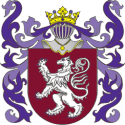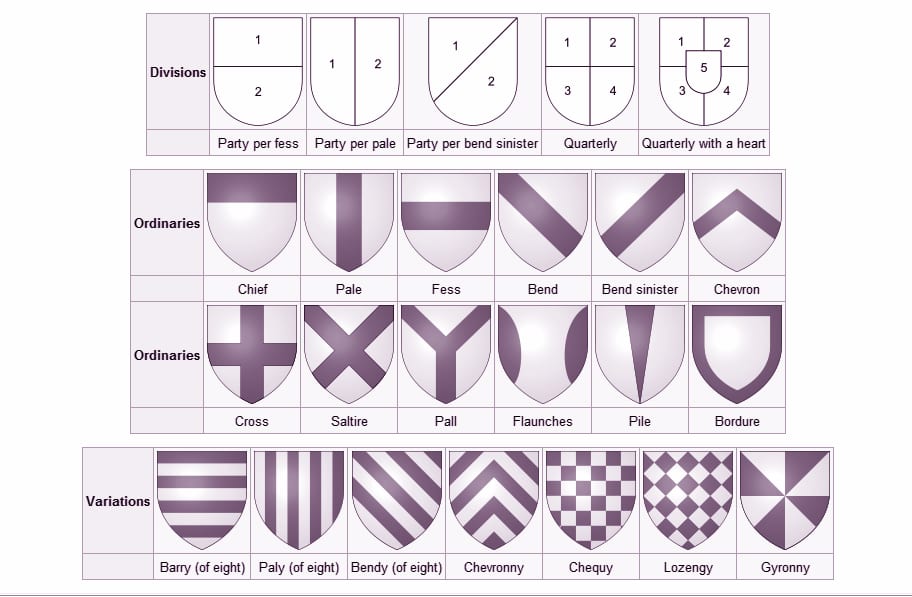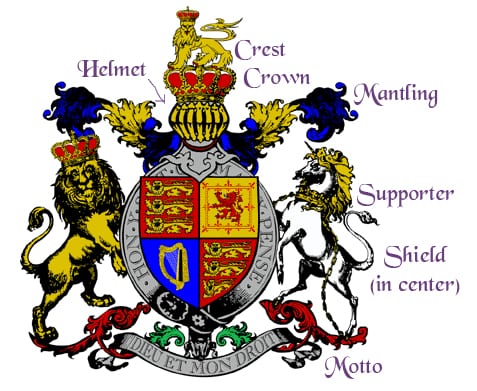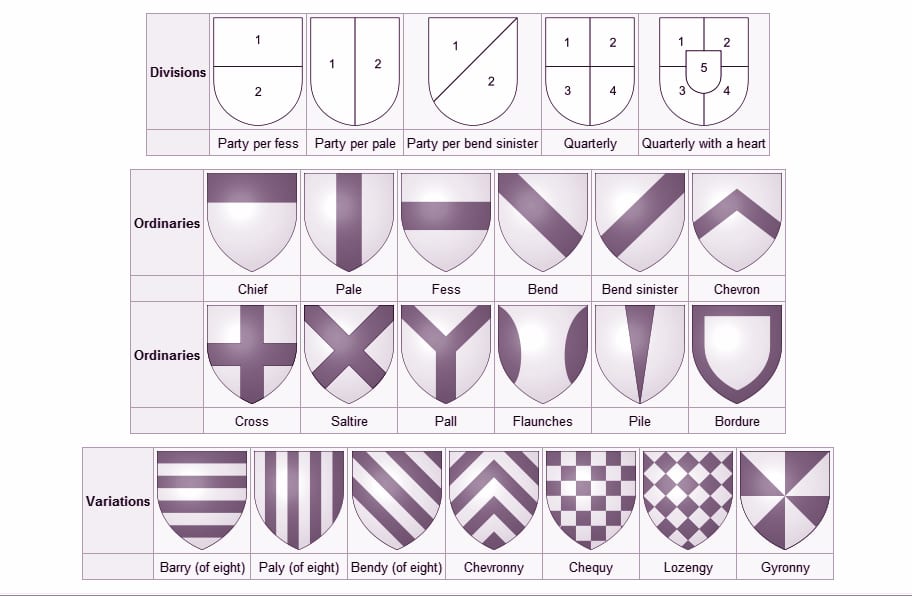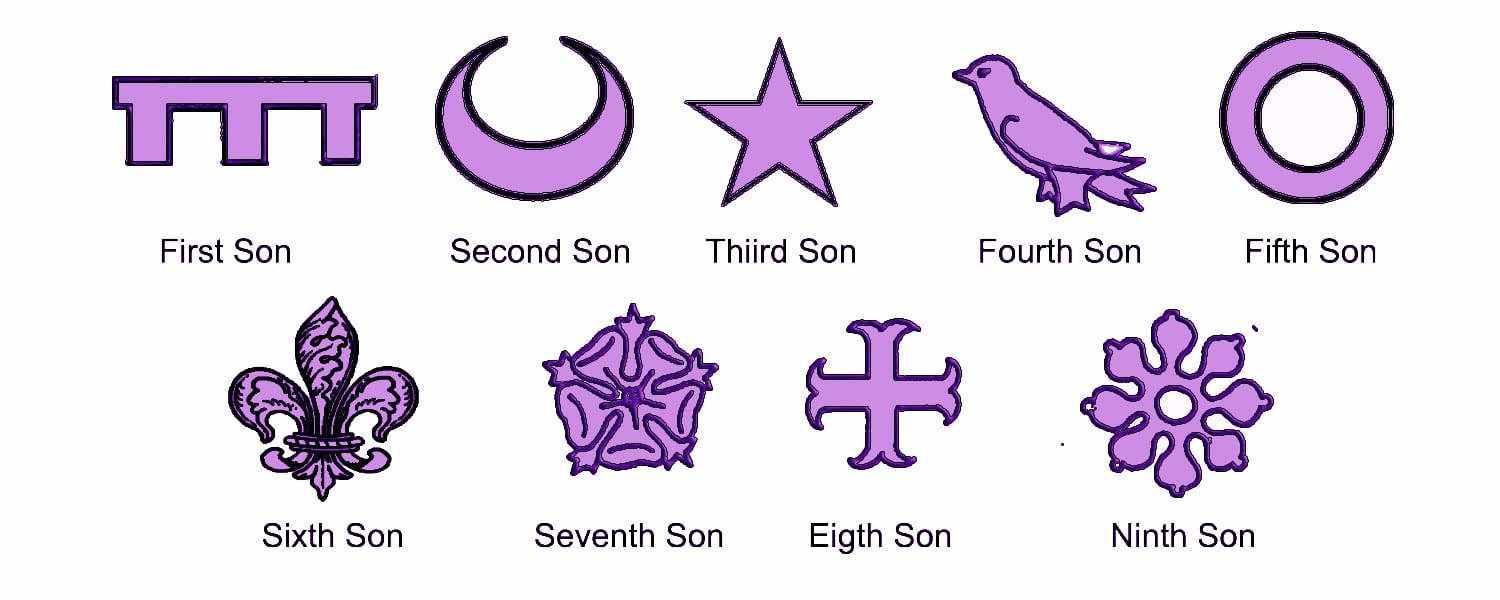In heraldry there is so many parts and pieces to learn about and in this write-up I wanted to talk about the Coat of Arms parts and the Shield, which is the main part of the Coat of Arms.
In a full Coat of Arms you have several parts which are:
- The Escutcheon or Shield, which is the word to express the whole Coat of arms, or the background field upon which the coat of arms lain on. This is in the center of the Heraldric Arms.
- The Supporters, which are on the sides of the shield.
- The Helmet, which is placed over the shield.
- The Wreath or Crown, which is two different colored silks wound around each other and placed on the top of the helmet and below the crest. In some cases there is no wreath but a crown is on top of the helmet.
- The Crest, which is an ornament that is placed over the helmet and wreath.
- The Motto, which is a word or short sentence inserted in a scroll. This is generally placed beneath the the escutcheon (shield). In some cases there is a 2nd placed above the crest.
- The Mantling, which is a drape that hangs down from the wreath. This is to represent the cloth that hung from the wreath and protected the back of the head and neck. Often this is often depicted more like the leaves of a plant.
Here is an example of the parts of a Coat of Arms the example is of the Royal Coat of Arms of Elizabeth II Queen of Great Britain and Northern Ireland.
This Coat of Arms has an added belt surrounding the shield that bears the motto of the
Order of the Garter, “Hon Y Soit Qui Mal Y Pense” or “Shame to him who evil thinks.”
On the motto at the bottom, “Dieu et Mon Droit,” means “God and My Right.”
The shield or escutcheon is made up of several parts or sections.
- Dexter Chief
- Middle Chief
- Sinister Chief
- Honor Point
- Fess Point
- Nombril Point
- Dexter Base
- Middle Base
- Sinister Base
The Dexter side of the escutcheon (shield) would be the LEFT hand of the person who looks at it. The Sinister side of the escutcheon (shield) would be the RIGHT hand of the person who looks at it. Chief is the TOP and Base is the BOTTOM. Fess point would be in the exact middle going both up, down and left, right. Honor is above Fess and Nombril is below Fess.
The next part of a shield is what is called Tintures. Tintures is the variable hue which is given to shields and their bearings. The tintures are divided into 3 parts Metals, Colors and Furs.
Metals are: OR (gold) and ARGENT (Silver)
Colors are: OR (Yellow), ARGENT(white), GULES (red), AZURE (blue), VERT (green), PURPURE (purple), SABLE (black), TENNE (orange) and SANGUINE (dark red)
The most common Furs are: ERMINE (white with black dots), ERMINES (Black with white dots), ERMINOIS (Gold with black dots), PEAN (Black with gold dots), VAIR (White and Blue alternating small bells)
Next part would be shield divisions, ordinaries and variations. If the field of the shield is divided into multiple tinctures then those would be divisions. Ordinaries are normallyan object placed upon the field of the shield. Variations are a combination of divisions and ordinaries. Sometimes divisions, ordinaries and variations can look like similar and can get confusing so to help with that I will show some examples.
In divisions you can also have type of lines that make up the division. Some of the types of lines are: Engailed, Invected, Wavy, Embattled, Nebuly, Raguly, Indented, Dancette, Angled, Chequay, Bevilled, Escatelle, Nowy, Dovetailed, Rayonee, Embattled Grady, Potent, Arched, Urdee, Radiant and many more.
Here are a few examples of Lines in the Chief position.
Next we have Charges, which are symbolic figures or bearings on the shield. Charges can be thought or as items or pictures that represent a item. Most look like small clip art of today.
We also have Marks of Cadency which tell where you rank in the family. Here is an example of the Mark of Cadency of England.
Now with all those possibilities you can have a shield for each person in the world and still have designs left over.
